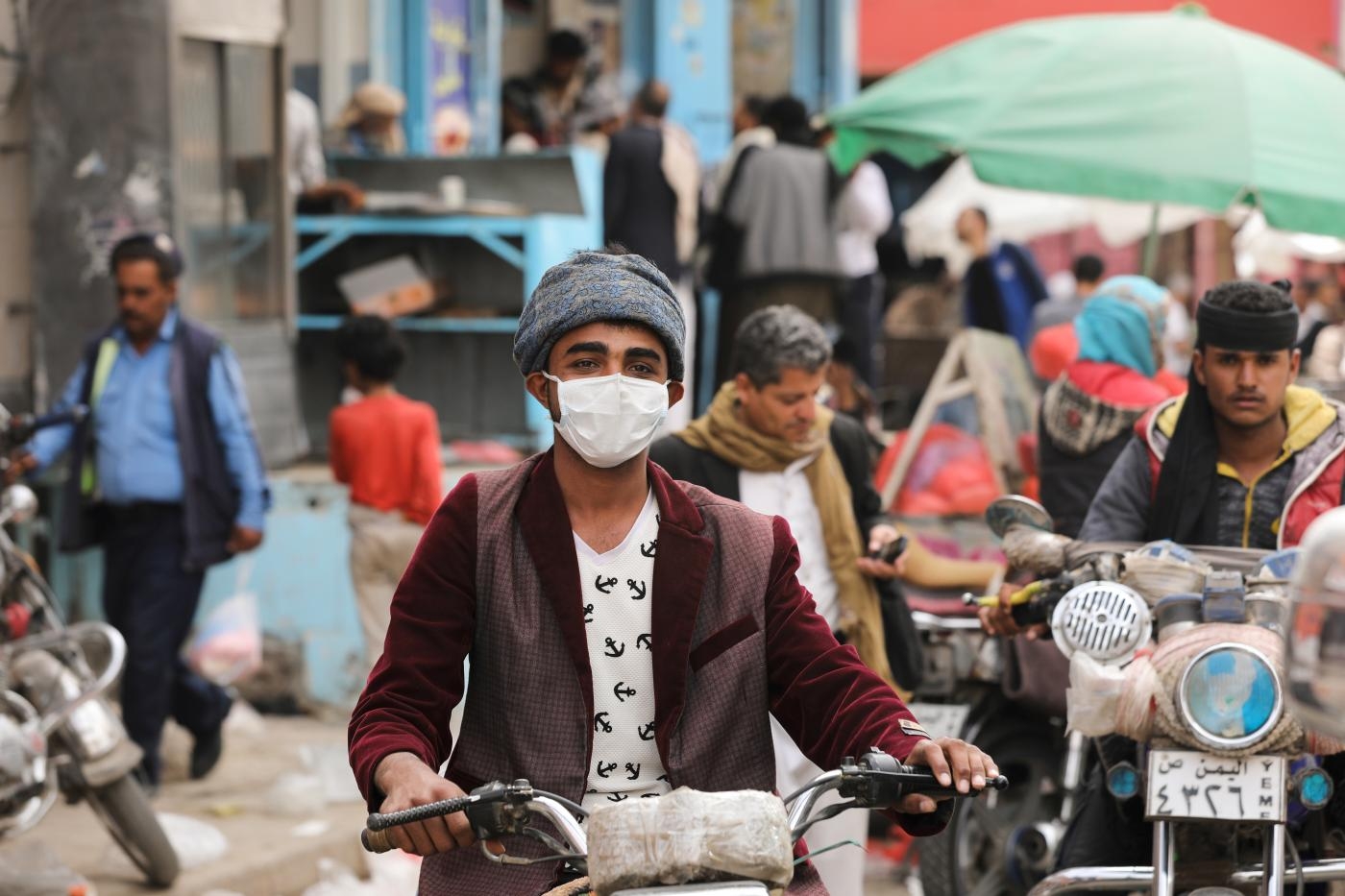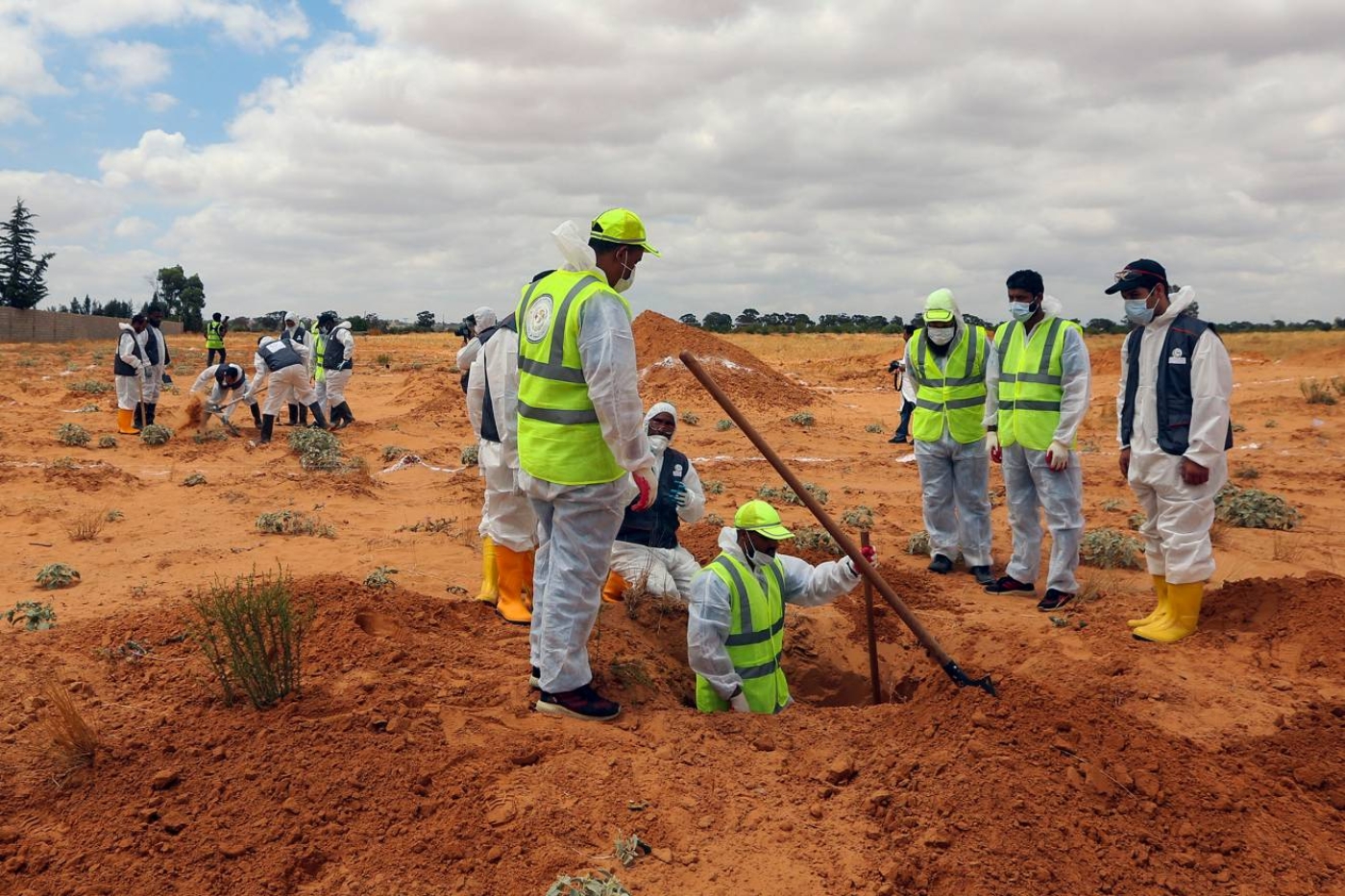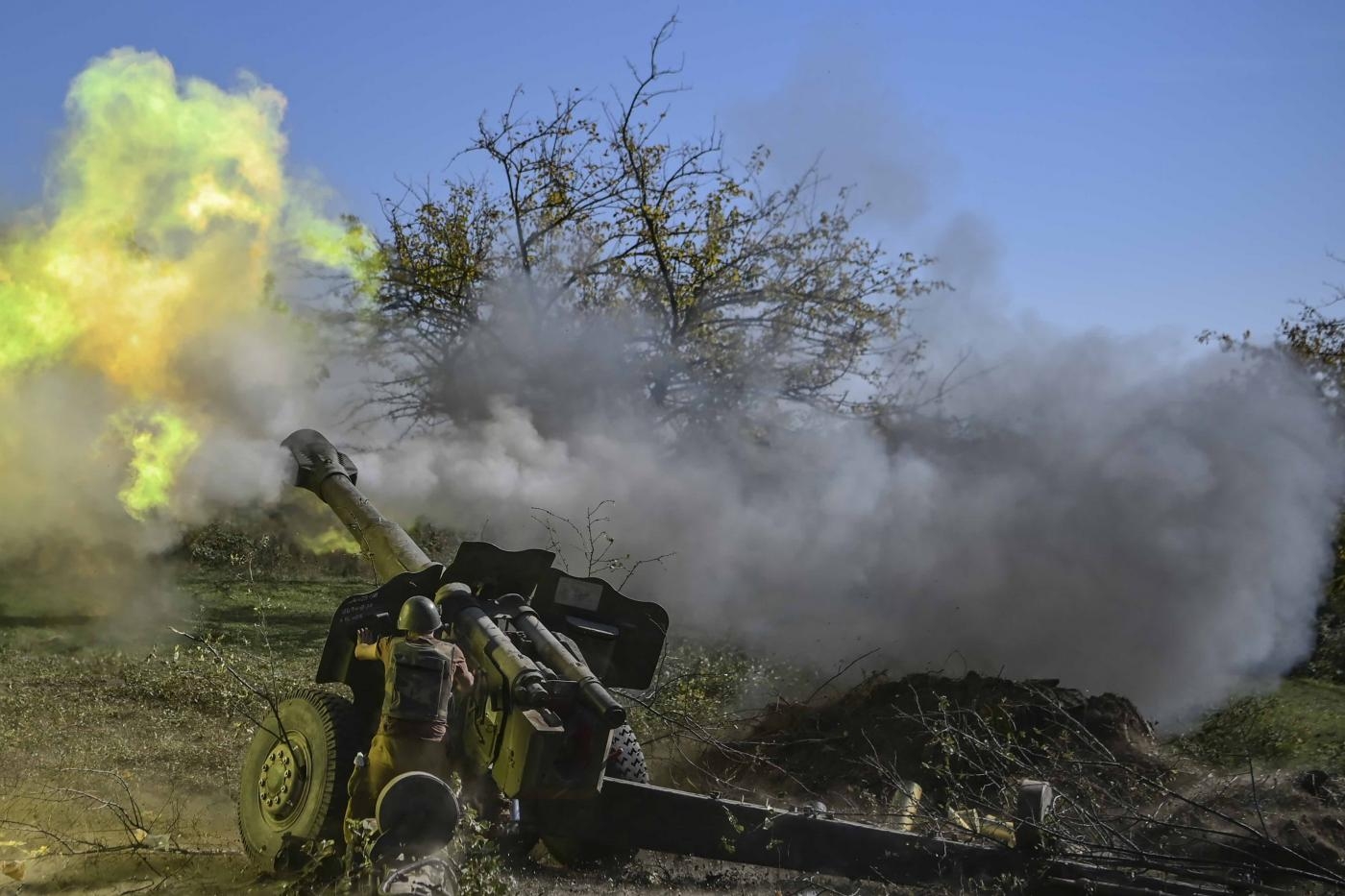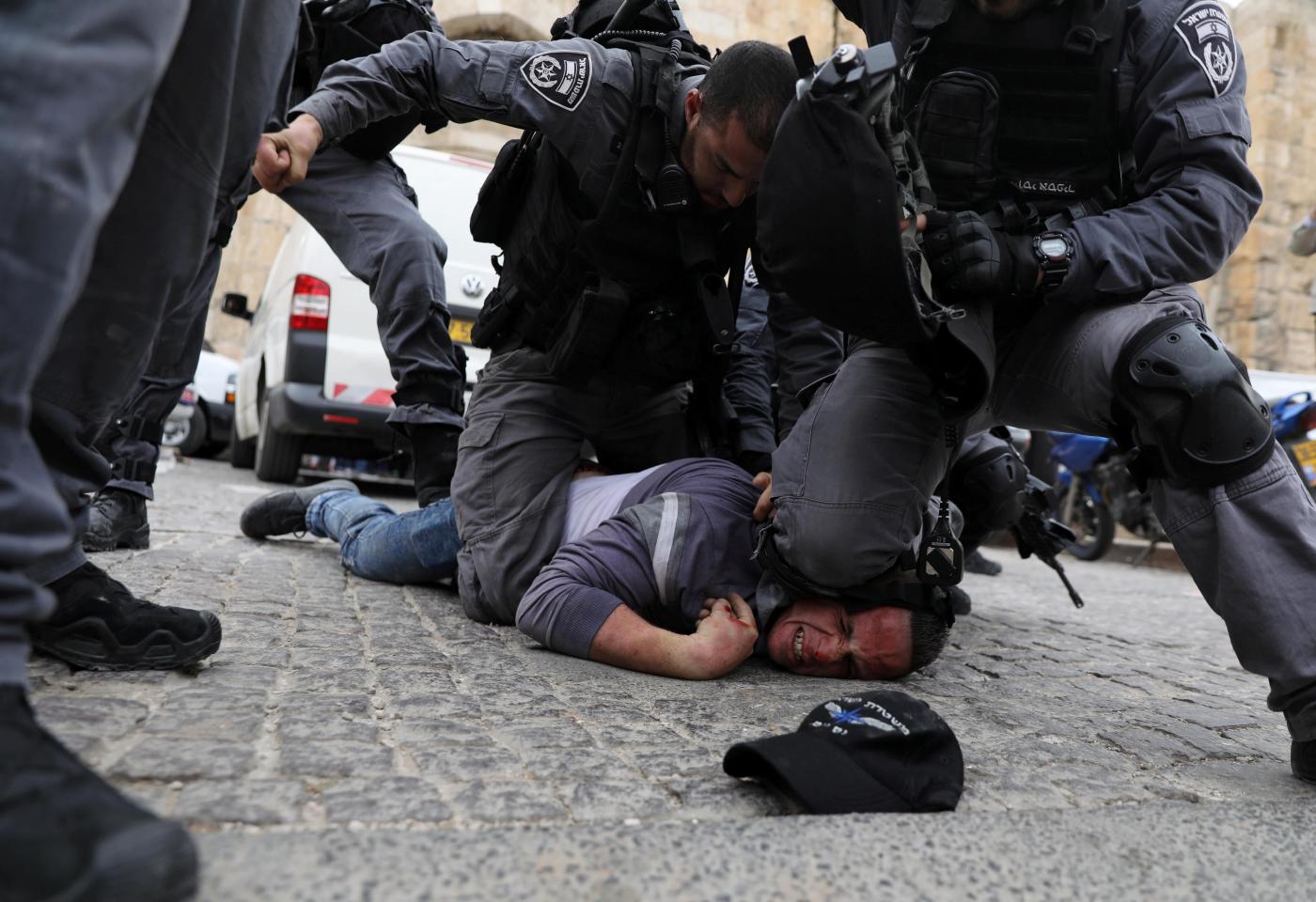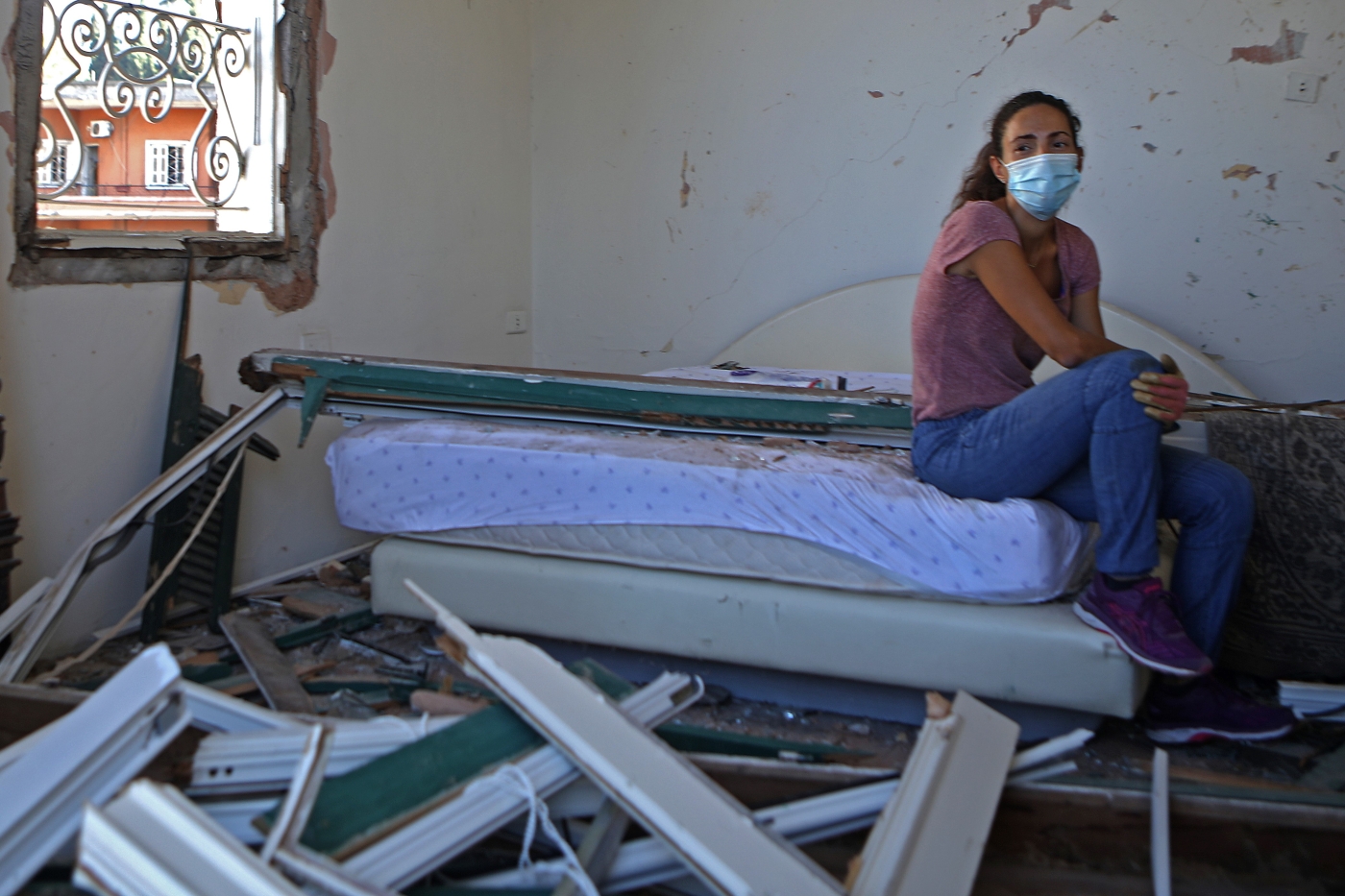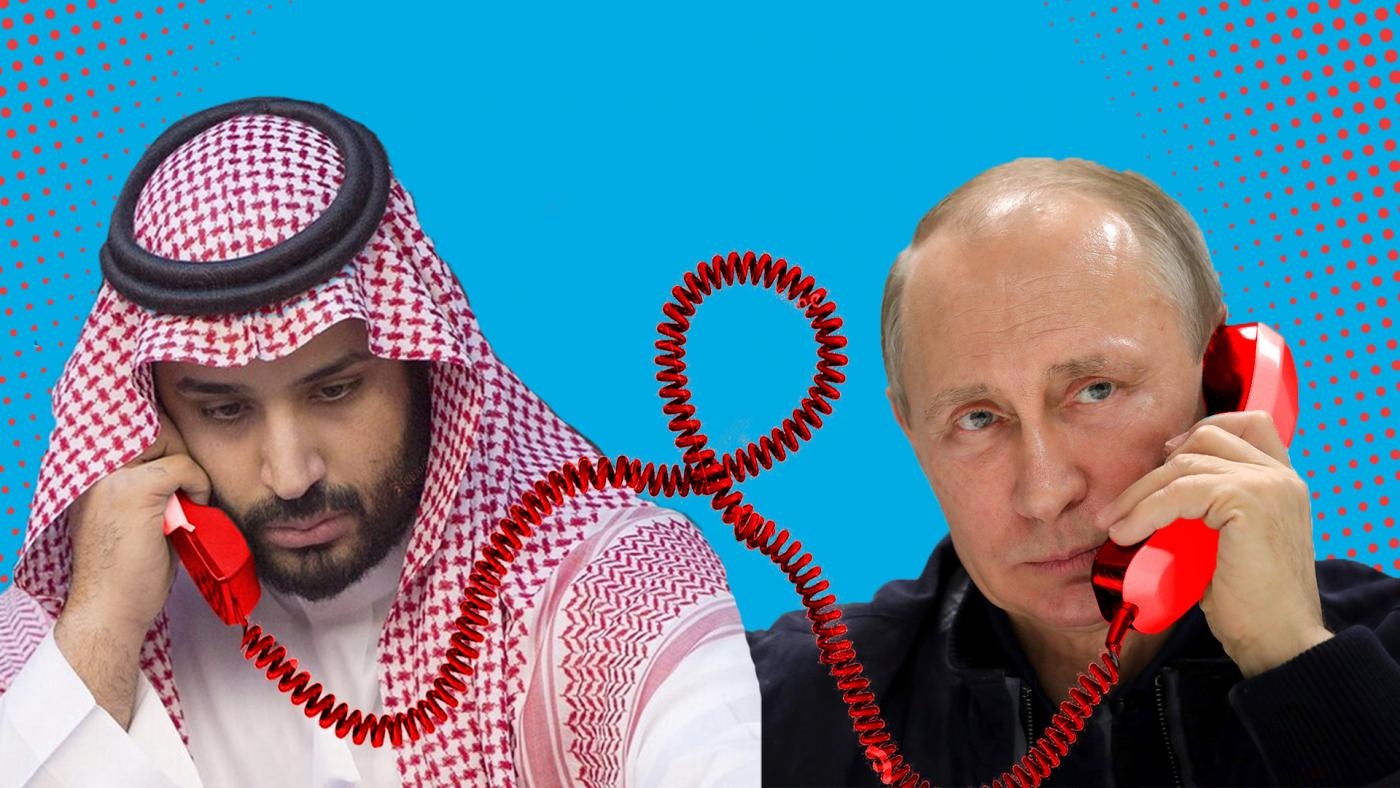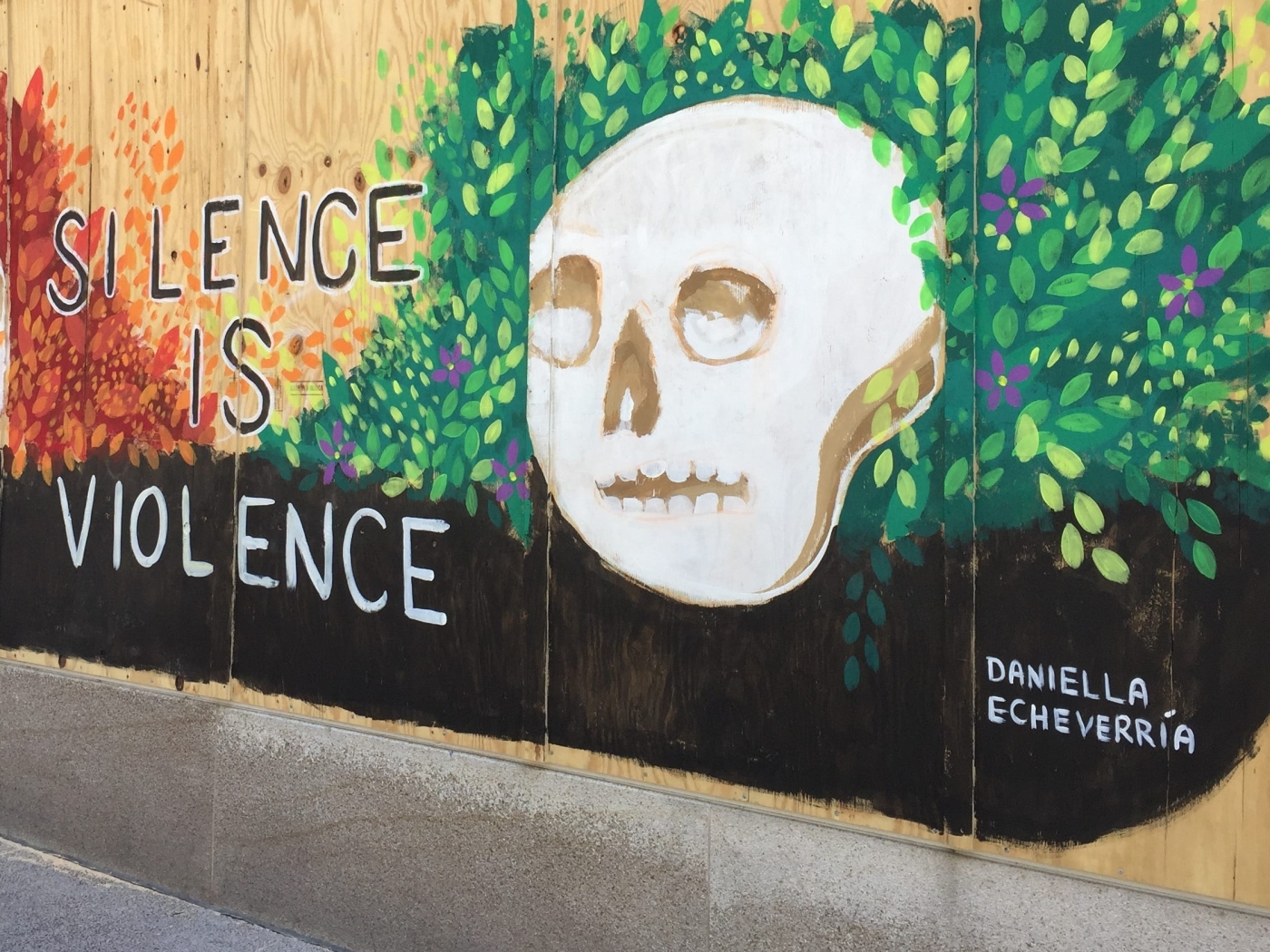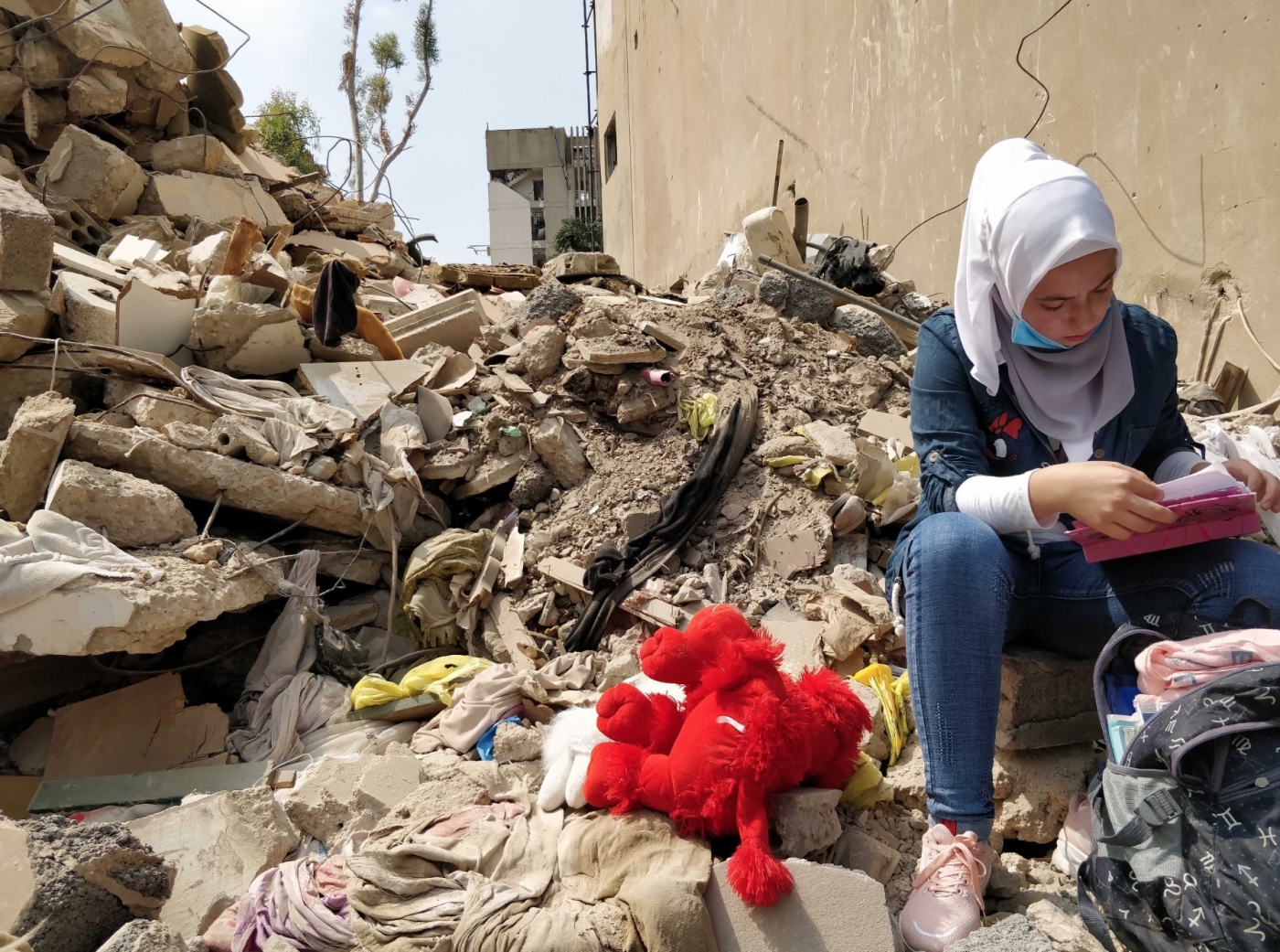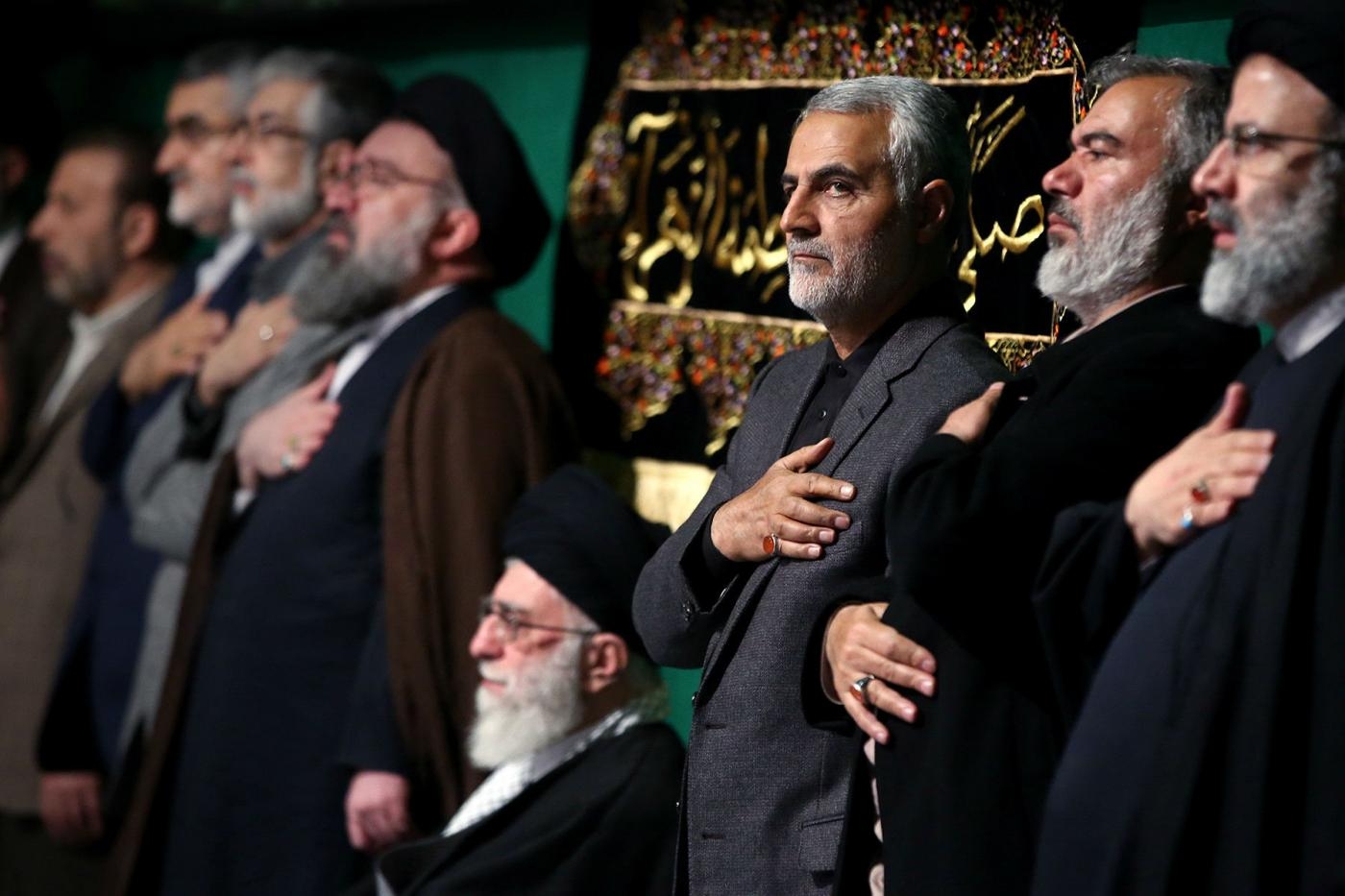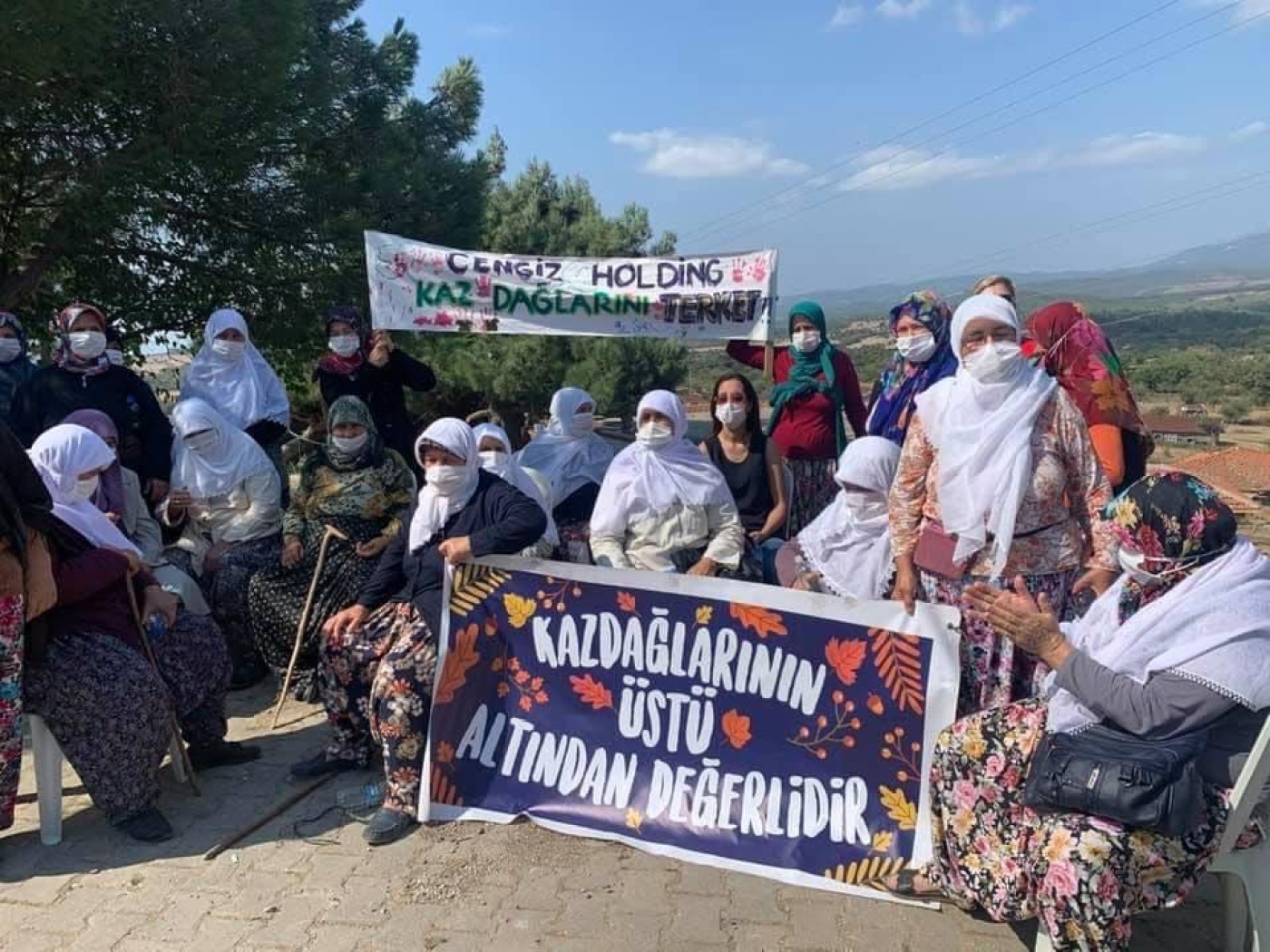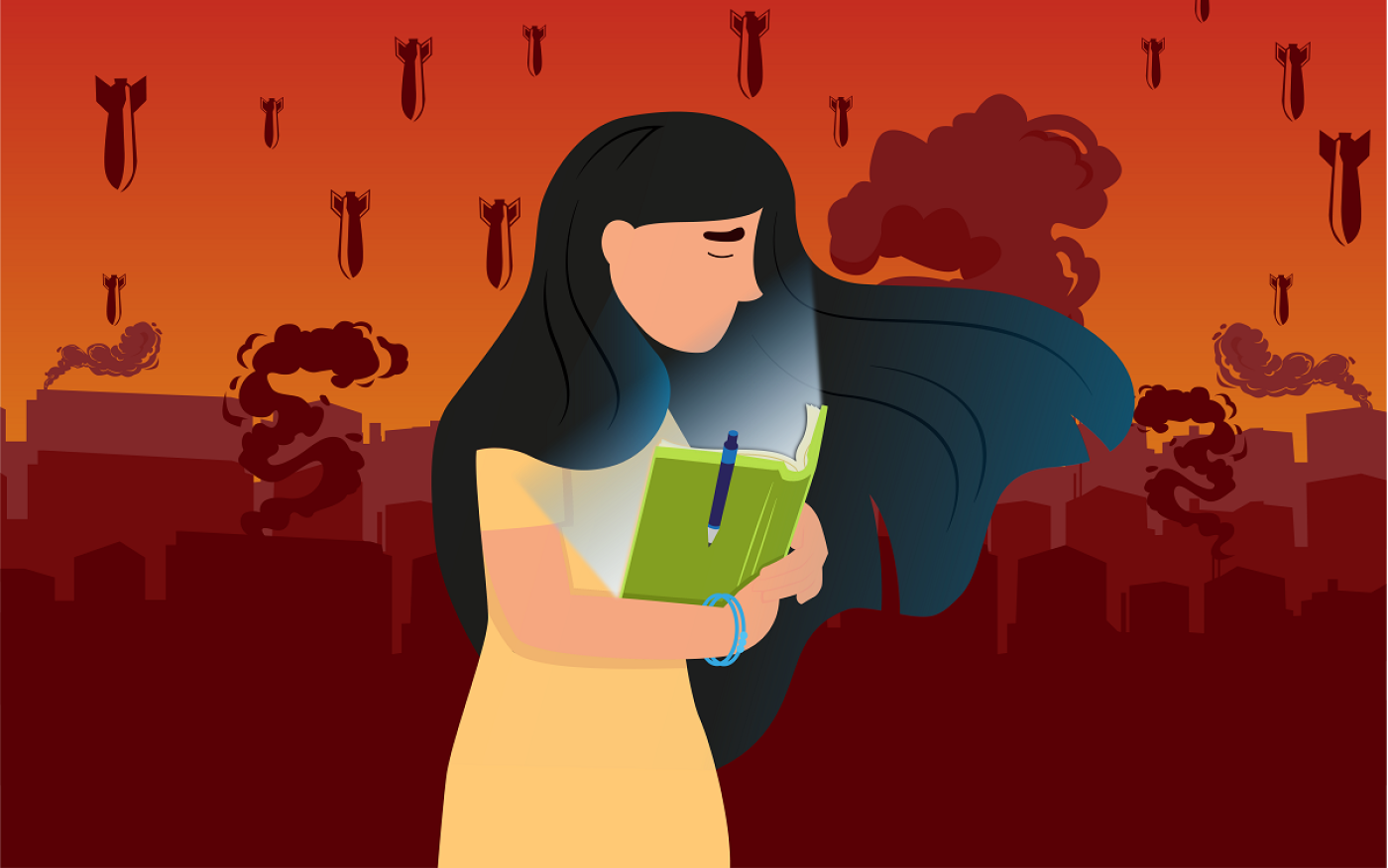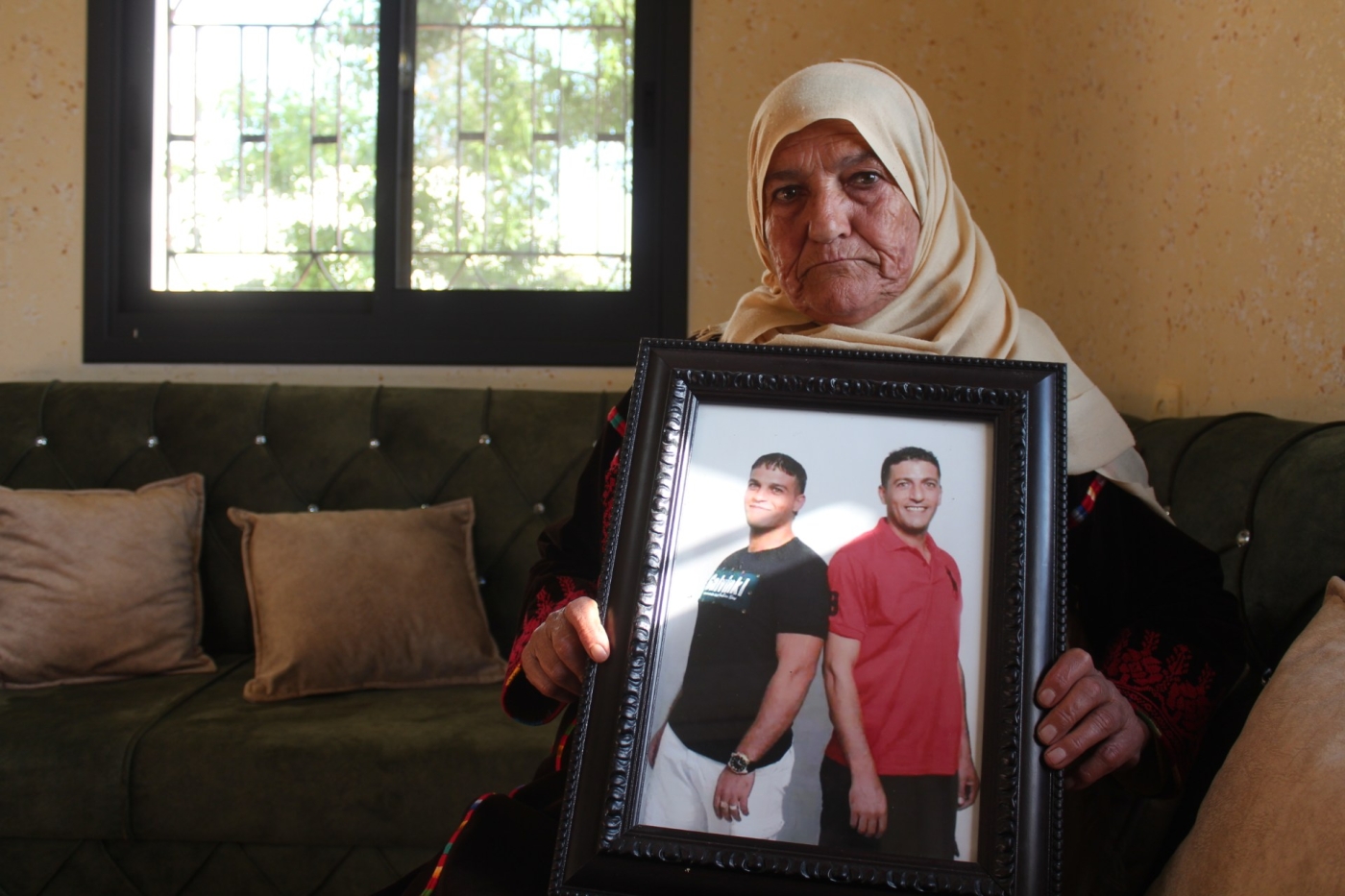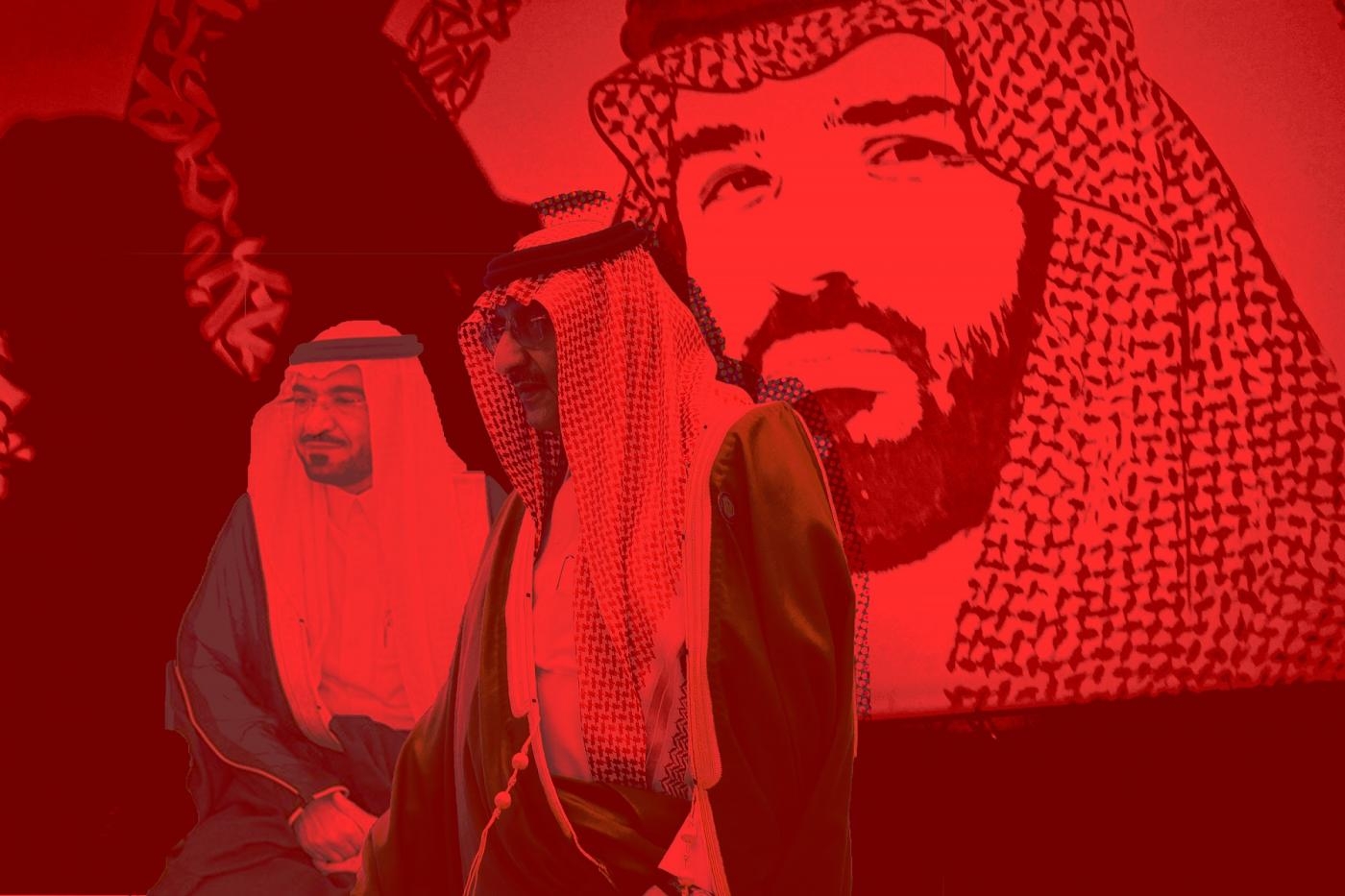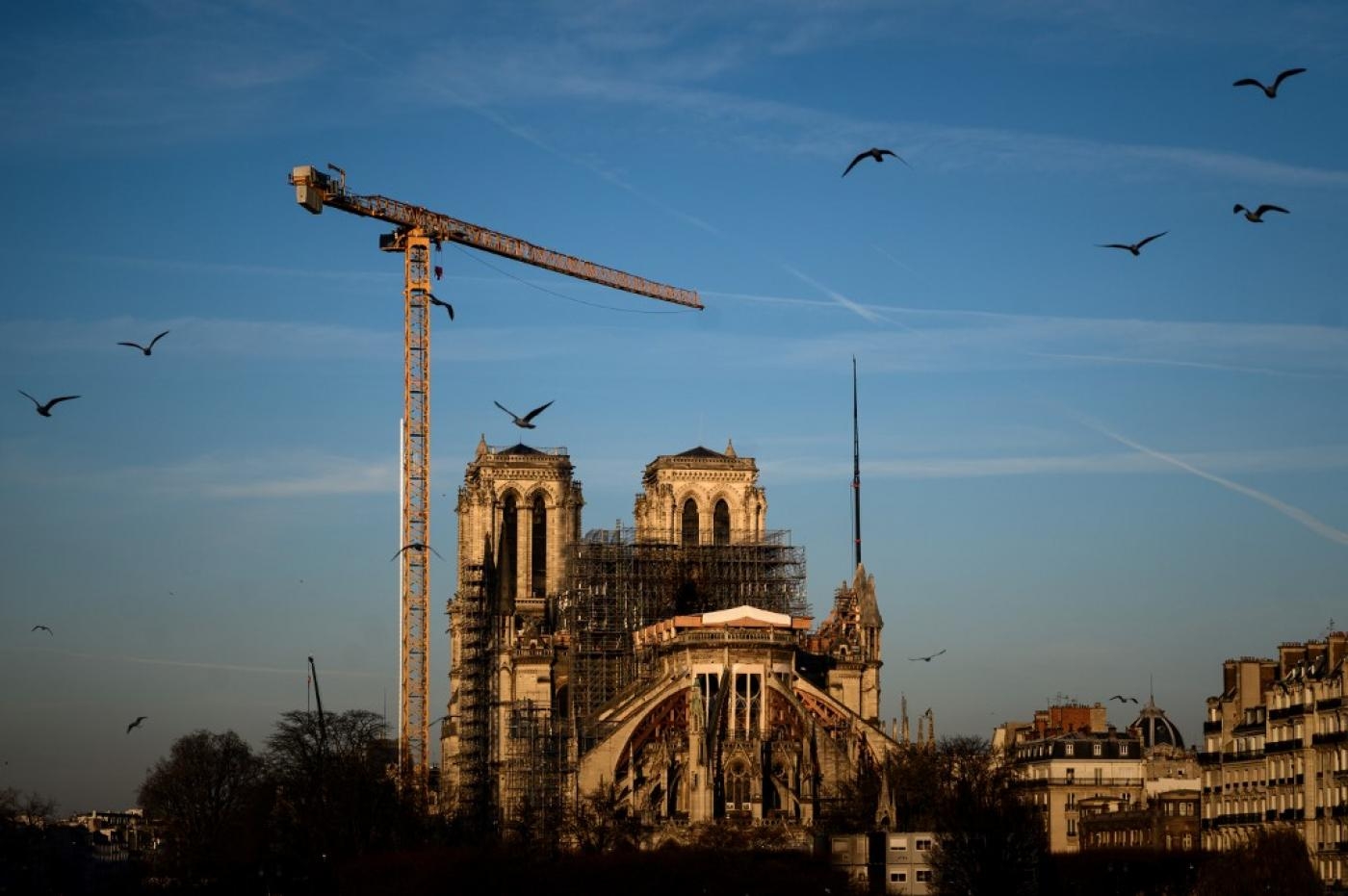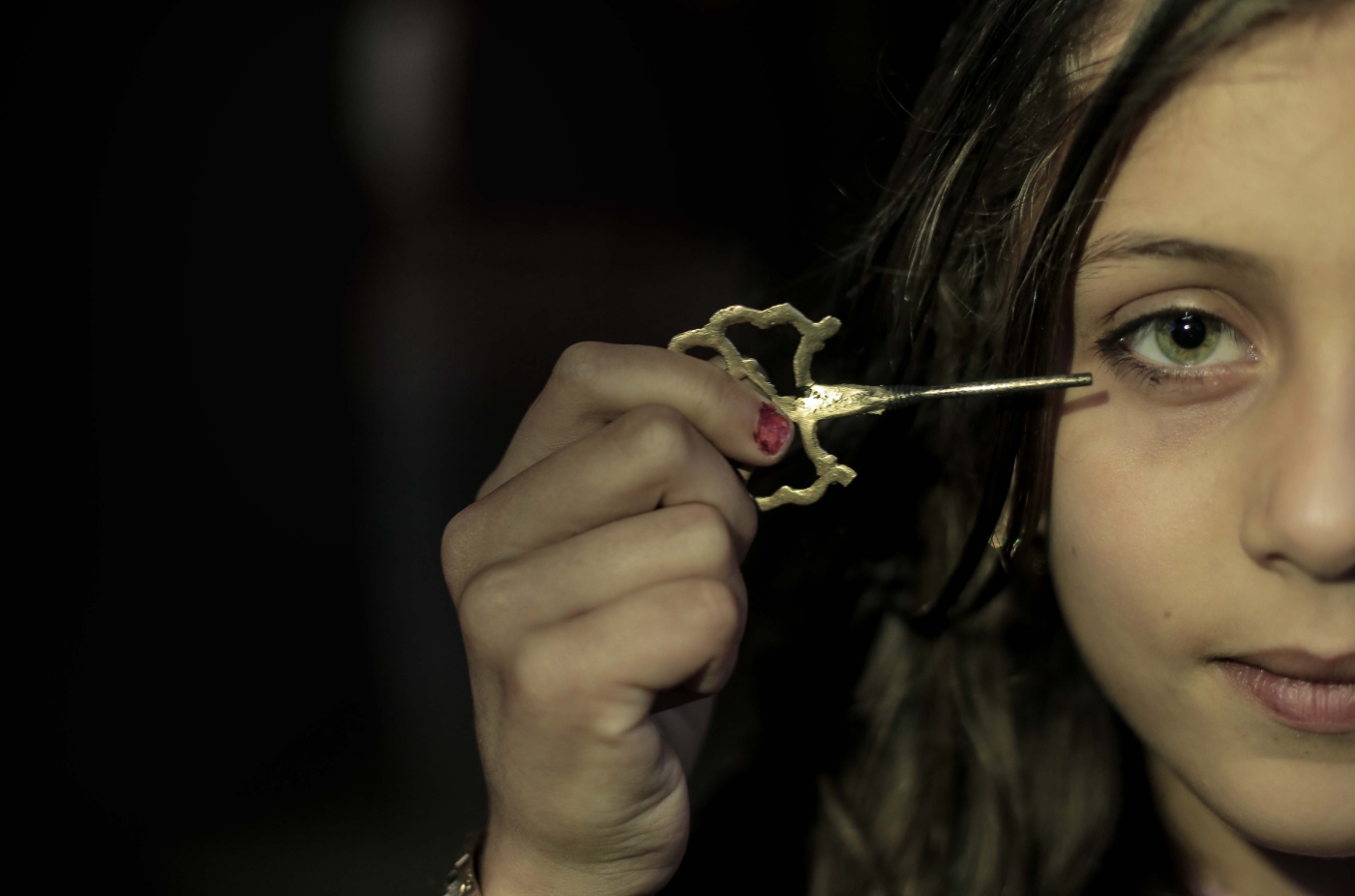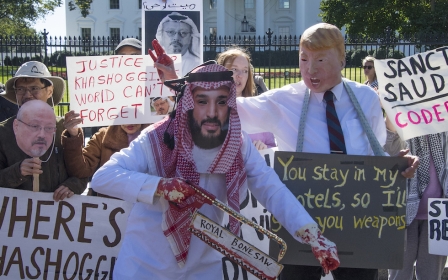Middle East Eye's picks of the year 2020

One story dominated not just the Middle East and North Africa, but the entire world during 2020: the Covid-19 pandemic.
The virus brought the planet to a shuddering halt. More than 1.7 million people worldwide have been killed by the virus so far and more than 77 million infected worldwide, according to the latest World Health Organisation figures.
Billions of people have been forced to live under "lockdown" conditions as governments have struggled to contain the spread of the disease, causing economic devastation, social upheaval and unprecedented restrictions on international travel. Its impact will reverberate for years t0 come.
In the Middle East, Iran was particularly hard hit by the illness. Thriving social movements and political transitions across Sudan, Lebanon and Iraq were thrown into turmoil, while economic and political crises were exacerbated. Countries heavily reliant on oil and gas exports, including Saudi Arabia and Qatar, have seen their revenues plummet with falling global demand.
The pandemic further accentuated the consequences of other events in the region, such as the assassination of Iranian commander Qassem Solimani in January, which brought Iran and the US to the brink of war, and the devastating August blast in Beirut that flattened much of the city and triggered new heights of anger against the country's political class. Throughout it all, art, culture and flashes of hope sought to counter the underlying gloom.
Stay informed with MEE's newsletters
Sign up to get the latest alerts, insights and analysis, starting with Turkey Unpacked
Below, Middle East Eye journalists have selected the stories and articles they felt mattered in 2020 - and the reasons why.
Coronavirus and aid cuts: Yemen faces 'two disasters at once'
By MEE Correspondent / Chosen by Alex MacDonald, Journalist
Extract: “In Europe, Covid-19 is killing thousands and they have good health systems, and people can buy food and stay at home, but in Yemen most Yemenis can’t stock-up food for a week. If authorities do not prepare the best solution for hungry people, there will be a catastrophe."
A number of Middle East Eye's correspondents, for reasons of personal safety and security, have to write for the website anonymously. Often their lives will be at risk if some of their subjects know who they are.
Although it is important to protect them, it is nevertheless a shame that many of MEE's best and bravest contributors do not receive the public recognition that they so deserve. The hope is that one day, in the future, they will.
This article is a prime example: an on-the-ground report from Yemen, where the twin horrors of famine and Covid-19 further devastated an already long-impoverished nation in 2020.
The continuing crisis in Yemen often slips off the news agenda. But this correspondent always manages to provide new angles, new voices and keeps the world's attention on one of its most avoidable disasters.
The killing fields of Libya's Tarhuna
By Daniel Hilton / Chosen by Ian Cobain, Senior Reporter
Extract: “If you’re in Libya in 2015, you look around and it’s just a nightmare everywhere you look. Tripoli was very dangerous, you had Daesh in Sirte and Daesh in Sabratha, corpses on the beaches of Zuwara, it was just horrible everywhere. And Tarhuna was very pleasant. It was quiet, it was very safe - you know, how North Korea is very safe.”
With terrible human right violations unfolding in Libya, Hilton became the first English-language journalist to visit, enquire thoroughly, and report back on the situation in Tarhuna - a matter of utmost importance.
This careful, sensitive, but ultimately shocking report was the first that he filed from Libya. It underlined the important role that journalism can occasionally play in exposing the crimes that are committed during war.
Not only was it a report that would have been welcomed by the reader; it may ultimately prove useful to the International Criminal Court.
Also see Hilton's related reports from Libya on Russian mercenaries in the region, the dangers facing civilians returning to Tripoli and the perils of mine clearing.
EXCLUSIVE: Azerbaijan, Armenia 'near ceasefire deal' on Nagorno-Karabakh
By Ragip Soylu / Chosen by Heba Nasser, News Editor
Extract: “The sources, speaking to Middle East Eye on condition of anonymity, said that the rapid progress of Azerbaijani forces on the ground had pushed Armenia to consider the Russian mediation plan, which is backed by Turkey, to stop the conflict.”
Ragip Soylu knows what's up. Based in Ankara, he has built such a wide network of contacts that his information constantly provides breaking news stories beyond Turkey, including the likes of Syria and Libya.
But none was bigger this year than his November exclusive on the Nagorno-Karabakh conflict, a dispute which, while decades-old, still grabbed headlines around the world. In 2020 it claimed the lives of at least 6,000 troops from the warring sides as well as hundreds of civilian casualties.
During the course of the weekend, Ragip broke the news that many in the region wanted to hear: a ceasefire had been reached. For me, this widely read piece captures Ragip's ability to dig into the latest developing story and come up with gold - days before people know what is coming.
US police departments under pressure to end training programmes with Israel
By Sheren Khalel / Chosen by Faisal Edroos, Senior News Editor
Extract: Since his death in late May, footage of Floyd pleading: "I can't breathe" and "they're going to kill me," has emerged alongside videos and stills of Israeli security forces taking similar positions over the necks of unarmed Palestinians in the occupied West Bank and the besieged Gaza Strip.
During a macabre summer, when the world witnessed the life squeezed out of an African-American man by the knee of a white police officer, our US-based journalists were transfixed on the protests ravaging the US over George Floyd's killing.
Triggering a wave of activism that spread to more than 50 countries, Floyd's brutal killing also thrust a lens on Israeli policing in the occupied Palestinian territories.
Sheren Khalel's deep dive focused on the links between Israeli police forces and their US counterparts, and how those connections have shaped racial profiling, counter-terrorism and the suppression of protests.
Beirut explosion: My heart is breaking, but there's no time to mourn
By Melissa Ajamian / Chosen by Chloé Benoist, News Editor
Extract: "Around me, my living room exploded all at once. A window in its entirety, glass and all, slammed against the wall, shattered into a thousand pieces, and came to rest on my couch. It took my cheap IKEA lamp down with it. The curtain tore off and flew across the room; the TV unplugged and fell face down. Both balcony doors blew open, like a scene from The Exorcist."
In a year filled with tragedies, the explosion in the port of Beirut on 4 August was one of the darkest days of 2020 for those to whom Lebanon holds a special place in their hearts.
The scale of human loss, material destruction, and corruption at play in the disaster, which claimed at least 200 lives, have defied comprehension for a country which was already struggling under a crippling economic crisis and the pandemic.
Only a few days afterwards, when many - including myself - were still at a loss for words in the face of the events, Melissa shared a raw and gripping account of her own experience on that fateful Tuesday evening.
For those of us far away, the immediacy of her words crystallised the horror of those first moments and the anger at the political class that has yet to be held accountable for its responsibility in the catastrophe.
The open wounds of Christchurch
By Mohamed Hassan / Chosen by Areeb Ullah, Journalist
Extract: “Sometimes I try to close my eyes and try to imagine that it’s not real, but I have seen so many things. Those memories hurt me sometimes. Make me depressed. Make me scared of so many things.”
I was on the weekend shift, and a dreary eyed Mohamed Hassan, who was in New Zealand to cover the first anniversary of the attacks, had just sent me a message: he had written a story, and it needed to be sub-edited.
I moaned. No one had told me I would be editing a story on my weekend shift.
But when I began reading his words, I broke down. Despite being thousands of miles away, the victims Mohamed described in his piece felt far too real. Sheikh Hasan Rubel, who was shot three times and is now confined to a chair unable to walk properly, reminded me of my dad. Hazem Mohammed, who played dead praying he wouldn't be shot, reminded me of my uncle.
Mohamed's long read was the most comprehensive piece I had read on the victims of the Christchurch mosque attack, which left 51 dead and many more injured in March 2019. His knowledge of New Zealand allowed the reader to know more about the local context and, more importantly, shed light on the dangers that right-wing rhetoric can have on ordinary people who can be both victims and perpetrators.
EXCLUSIVE: Saudis launched oil price war after 'MBS shouting match with Putin'
By David Hearst / Chosen by Ragip Soylu, Turkey correspondent
Extract: “'Just before that meeting there was a call between Putin and MBS. MBS was very aggressive and gave an ultimatum. He threatened that if there is no agreement, Saudi would start a price war. The conversation was very personal. They shouted at each other. Putin refused the ultimatum and the call ended badly,' the Saudi official said, speaking on condition of anonymity.”
David's report went beyond revealing the details of a tense and messy phone call between Russian President Vladimir Putin and the Saudi Crown Prince Mohammed bin Salman which triggered a short-lived oil price war in April.
It also lifted the lid on how two leaders communicated through back channels to cut deals. David also showed how US President Donald Trump and his close adviser and son-in-law, Jared Kushner, were also part of the oil game.
This story stands as an important chapter in the annals of 21st-century authoritarian leaders and their power plays.
How Ertugrul resurrected the Muslim imagination
By Azad Essa / Chosen by Nick Hunt, Managing Editor
Extract: "The show is about Muslim history, Islamic ideals and resisting tyranny. Social codes and values are not just relatable, they are the norm and the standard; a self-contained universe of thought and practices, where Muslims are able to see themselves as heroes, villains, collaborators, and not as caricatures written by outsiders."
It was a strong year for content from Discover, Middle East Eye's feature section. The best pieces, during such a harrowing year, were the most personal and reflective, from Nashwa Gowanlock on how her mother and the Egyptian movie icon Magda al-Sabahy made her a feminist, to cinema critic Joseph Fahim on how the pandemic gave him pause for thought about the future and what direction he film industry should take. But for me, the strongest article was also the most in-depth: Azad Essa on the global television phenomenon that is Ertugrul.
The piece is wide-ranging but has a very strong focus that cannot but intrigue the reader: how a minor 13th-century warlord from Turkish history has become a cult figure for millions around the globe. You cant help but read it, whether you're interested in Islam or the TV industry or you're simply an Ertugrul geek, like Azad.
Through the article, Azad traces the intrinsic spiritual and emotional appeal of the show and its resonance, critiquing and highlighting influences including other historical Muslim hero figures, Hollywood Islamophobia and the influence of Islam. One of the main takeaways is how the show rekindled imagination for its Muslim viewers across the globe. It's a weighty read, embellished by striking illustrations from Mohamad Elaasar.
It's a very different piece from the one that Azad first pitched to me more than a year ago. During that time, the core pitch underwent several changes. But that happens with all the best articles – and Azad's analysis of Ertugrul was all the better for that wait.
In pictures: The hidden lives of the Amazigh people
By Ouissal Harize / Chosen by Chris True, News Editor
Extract: "Between 1950 and 1980, Mansouri had amassed a photographic archive of thousands of images. Before he died, the 53-year-old Mansouri instructed a friend to burn the remaining archive out of concern for the privacy of his clients. But instead of burning them, the friend kept the photographs safe until the Westwood Gallery first exhibited them in 2007."
This remarkable picture gallery showcased just some of the images left behind by the Algerian photographer Lazhar Mansouri (1932-1985) in his archive documenting the lives of the Amazigh Chaoui tribe, to which he belonged.
The photographs were displayed earlier this year in a special exhibition of Mansouri's work held at The Westwood Gallery in New York City, entitled "Lifting the Veil: Portraits of Amazigh Women".
The striking photographs, mixing both modern and traditional themes, cannot help but outline a transformative period in Algeria's history.
'He was no angel': The rallying cry of the lynching bee
By Yannick Giovanni Marshall / Chosen by Megan O'Toole, Columns Editor
Extract: "The charge of being a non-angel is meant to dehumanise Black people. But they would lynch angels."
After the murder of George Floyd at the hands of US police in May, Yannick Giovanni Marshall examined the role of the crowd in modern-day lynchings - from the biased decisions of juries, to the hatred of online comment boards, to the racism of national news networks.
His haunting column describes the push to desecrate the memories of murdered Black people while exonerating their white killers.
Beirut explosion: Syrian refugees feel double the loss after port blast
By Nadda Osman / Chosen by Rayhan Uddin, Associate Social Media
Extract: "I still can't believe they are gone. I try to shut my eyes tight and imagine my sisters and my mum. I hug them tight in my dreams and tell them everything is okay"
Nadda Osman's report from a Syrian refugee camp in Beirut was the most heartbreaking story I read in 2020. She spoke to families who had fled the war in Syria and relocated to Lebanon's capital, only to find themselves near the epicentre of the biggest recorded non-nuclear explosion in history.
Among them was 16-year-old Dima, who left Idlib with her family after their home was destroyed by an air strike. On 4 August, she lost her mother and two sisters when the Beirut blast caused their building to collapse.
One cannot begin to imagine the pain felt by those who escaped death, destruction and displacement only to meet it again in the most unexpected and tragic circumstances.
Tracked, targeted, killed: Qassem Soleimani's final hours
By Suadad al-Salhy / Chosen by Daniel Hilton, Senior News Editor
Extract: "They do not pass through the regular formal channels to stamp their passports at the airports. They do not use smartphones, and they move in ordinary cars with the fewest possible number of people. Overall, it was difficult to track them. But the Damascus and Baghdad airports are full of pro-American intelligence sources, and because of this they have been hunted down."
I was fast asleep when my colleague, Heba Nasser, called to tell me Qassem Soleimani might be dead. "Where on earth are you seeing that?" I asked incredulously. Hezbollah's Al-Mayadeen, she replied. The next few days were pandemonium.
It is easy to forget that 2020 began with a literal bang, given all that followed. The US assassination of a top Iranian general on 3 January felt like we were entering a year of uncertainty when conflict between the United States and Iran was a distinct possibility.
The next day, I was introduced to the writing of Suadad al-Salhy, whose story breathlessly and exclusively detailed the general's movements leading up to his killing, and how they exposed him to danger.
Here, as in all her pieces, Suadad has unrivalled information from a range of contacts in near-impossible to reach places. Soleimani's killing fundamentally changed the political equation in the Middle East, blurring certainties, and nowhere has this been more apparent than in the place of his death, Iraq.
Throughout this year, Suadad has used her powers as a journalist to expose how that assassination has reverberated throughout Iraqi politics. She has done so at considerable cost. In October, an opaque arrest warrant was issued for her on charges of "defamation". That attack on free press has scandalously not yet been quashed, but she continues to write exclusive after exclusive, each as powerful as this one published just as 2020 began. Long may they continue.
Turkey's Mount Ida: The frontline between mining giants and local people
By Alex MacDonald / Chosen by Oscar Rickett, Senior Sub-editor and contributor
Extract: "For the last 20 years, there has not been a single day where we have not seen an image of eco-massacre on the media: mining projects, hydroelectric power plants and nuclear reactors, each bringing alarming environmental concerns are being built or planned in many parts of the country."
The climate crisis is the defining story of our times but often does not lend itself to being told as a story. Such a problem calls for thoughtful and inventive journalism.
The "slow violence" wreaked by climate change can appear invisible, but the forces that are driving it - natural resource extraction, corrupt elites, the devastation of areas of outstanding natural beauty - are as dramatic as they are dreadful.
Alex's piece about Turkey's Mount Ida, a beautiful place the Turkish government and its allies in the corporate world are trying to carve up for profit, is a case in point.
Turkey is often overlooked when it comes to the climate crisis, but it is a front line in a battle between extractive capitalism and local people, many of whom are battling bravely to defend their environment - for us all.
Books and bombs: How I healed myself through fiction
By Atiaf Alwazir / Chosen by Mahmoud Bondok, Head of Social Media
Extract: "With time, journalling became a habit. I wrote about my first crush. I wrote a letter to God, praying for my pimples to disappear. I wrote about my excitement when I got my period. I wrote about a fight with my cousin. I wrote about the 1991 Gulf War. I wrote about feeling ashamed. I wrote about feeling afraid."
In this deeply moving and personal essay, Yemeni writer and research consultant Atiaf al-Wazir described her experiences during the 2011 uprising in her native country, where her self-assigned tasks included documenting the dead for human rights organisations.
She traces her journey through depression and subsequent departure with her family from Sanaa, interweaving her own family's painful history. Eventually she finds her path towards healing - through writing.
Inspired by her grandmother's memories, al-Wazir uses the act of writing fiction to face her "inherited and experienced" pain, "without judgement". It's an honest, raw and reflective piece of beautiful writing which remains, above all else, hopeful.
'We live on hope': The mothers Palestinian prisoners left behind
By Shatha Hammad / Chosen by Lubna Masarwa, Jerusalem Bureau Chief
Extract: "In her velvet hand-embroidered traditional thobe, sewn with red thread, 75-year-old Helwa Hamed sits by a window in her humble home, where the warm April sun seeps through onto photos scattered on the couch in front of her. She inspects the photos delicately, picking one up and looking at it for a few minutes before taking another one and repeating the process. It is as though she is seeing them for the first time. The photographs are of her two sons, Akram and Rafat Hamed. This is how Helwa spends her days, ruffling through the few old photos she has of her sons that were sent to her from inside Israeli prisons."
Shatha Hammad's piece gave readers a rare opportunity – to look into the life of Palestinian women who long to see their beloved sons who have been sentenced for a lifetime in Israeli prisons.
What Hammad does so well is highlight the small telling details such as how the women dream at night about their sons being free or the moment they walk out of prison, even the act of when they will finally eat at home.
The photos are also evocative as each woman holds a portrait of their son, living in their memories and hopes of liberation.
Such pieces by Hammad, whose work was recognised this year at the One World Media Awards, demonstrate the resilience of the mothers who wait, making visible their pain and internal grief at a time when Palestinian women have never been so invisible in the political conflict.
EXCLUSIVE: Top Saudi intelligence official 'chased' to Canada by MBS
By Dania Akkad / Chosen by Simon Hooper, Head of Investigations
Extract: “Let’s assume that there might be a coup in Saudi. He’s the biggest threat. He would have the money and power to do something.”
Dania Akkad was the first journalist to report in depth on the case of Saad al-Jabri, a former senior Saudi intelligence official who fled to Canada amid a power struggle between then-crown prince Mohammed bin Nayef and the man who ousted and replaced him, Mohammed bin Salman.
This was a story in the best traditions of investigative reporting which emerged from months of patient pursuit and cross-checking of leads and tipoffs, and conversations at all hours of day and night with sensitive sources.
Jabri's situation has now been widely reported, in part due to his subsequent legal case brought in Washington against the crown prince. But Dania's story, published in March, was also among the first to substantiate the lethal dangers faced by other Saudi exiles after the 2018 killing of Jamal Khashoggi.
US elections 2020: A who's who of Joe Biden's foreign policy team
By Umar Farooq / Chosen by Azad Essa, Senior Reporter
Extract: The Democratic nominee's advisers consist of many former Obama-era officials, some who helped craft the Iran nuclear deal, drone strikes programmes and sanctions on Syria and Libya
The fear of a second term for Donald Trump seemed to knock the senses out of the mainstream media during their coverage of this year's presidential election. And it was in matters of US foreign policy that liberal media suffered most from wilful amnesia.
Umar Farooq's piece on Joe Biden's preference for enthusiastic interventionists on his foreign policy team was among the first to subvert an egregious narrative that a post-Trump America would look any less hawkish under the Democrat.
Notre-Dame: Secret Syrian origins of France's medieval art
By Diana Darke / Chosen by Mustafa Abu Sneineh, Journalist
Extract: “Coloured glass windows have been an integral and innovative element of Islamic architecture since the 7th century, starting with Jerusalem’s Dome of the Rock, which had coloured glass in its many high windows. They were known as shamsiyyat (from Arabic for sun) and qamariyyat (from Arabic for moon), showing how the solar and lunar imagery of windows continued into European religious architecture."
Darke, surmising from her excellent book Stealing From The Saracens, illustrates how architectural forms and techniques that initially appeared in the first churches in northern Syrian travelled to western Europe.
European kingdoms, which engaged in commerce, war and diplomacy with Muslims on the southern and eastern shores of the Mediterranean, were left awed by the grand architecture of the Islamic mosques and the speed at which they were built.
Soon guilds in Paris, London and elsewhere had learnt how to build grand domes, taller spires, ornamental arches and stained glass. Churches dominated skylines of European cities, just as mosques did across the metropolises of Egypt, Syria and Turkey.
Notre-Dame, wrecked by fire in April 2019, was one of those majestic structures that owes so much to the Middle East. France's most famous church is expected to reopen to the public in 2024 - in sharp contrast to the Dome of the Rock in Jerusalem, which took only two years to be built during 691 and 692.
UK counter-terror programme targeted BAME women using Instagram influencers
By Ian Cobain, Nadda Osman / Chosen by Joe Gill, chief sub-editor
Extract: "Stoosh describes itself on Facebook as a page that "aims to promote a safe online environment for young women to tell their stories, taking ownership of their own narrative. Both Stoosh and This is Woke described themselves on Facebook as having been produced by a "media/news company". In fact, they were created by a London-based communications company called Breakthrough Media, which was under contract to the Office for Security and Counter-Terrorism (OSCT), a unit within the UK government's Home Office."
In this piece, Ian Cobain and Nadda Osman reveal a counter-radicalisation programme called Stoosh, which targets young black and Muslim women under the auspices of female empowerment.
Cobain has been reporting on the shadowy nature of the British government's Prevent counter-extremism programme for several years. Since joining Middle East Eye he has investigated the activities of the Home Office and its private sector contractors such as Breakthrough Media, which recruit social media influencers to push out messaging to effect "attitudinal and behavioural change" among British Muslims.
The impact of such programmes is also felt overseas, in Syria and other Middle East countries. This investigation exposes the way the Office for Security and Counter-Terrorism and other UK government agencies hide their role behind a complex of subcontractors.
Frontline activists, operating with the best of intentions, are often kept in the dark about the political nature of the work for which they are recruited. Here, Cobain and Osman pulled back the curtain.
'No humanity': Trump pardons Blackwater war criminals who massacred Iraqis
By Ali Harb / Chosen by Umar Farooq
Extract: "'The blood of innocent Iraqis that was spilled in the Nisour Square is red blood that is no different than the blood of Americans. These were humans.'"
Although there are regular news updates about the suffering and misery caused by the US-led war in Iraq, Ali Harb revisited the trauma felt by a father who lost his son at the hands of ruthless American mercenaries.
In 2007, private contractors from the US security firm Blackwater opened fire in Baghdad's Nisour Square, killing 17 Iraqi civilians, including nine- and 11-year-old boys. After years of court proceedings, US prosecutors successfully argued in 2014 that the contractors launched an unprovoked attack, using sniper fire, machine-guns and grenade launchers to indiscriminately fire at civilians.
But earlier this month, US President Donald Trump ordered all four men convicted of the killings to be released, undoing the years-long fight for accountability. In an important part of the coverage of the consequences of US military intervention in the Middle East, Ali Harb spoke with Mohammed Kinani, the father of the nine-year-old who was shot dead in the massacre.
"I don't know how this is allowed," Kinani said as he struggled for words upon learning of the pardon. "There must be a way. If not in the earthly courts, then with God. God will not let them go."
How a Palestinian woman keeps the craft of kohl alive
ByMaha Hussaini / Chosen by Shatha Hammad
Extract: "Before Israel occupied Gaza, when I was in the fourth grade, I came back from school one day to find my mother burning a piece of cloth in an iron pot. I asked her what she was doing and she told me this is how kohl is made.”
Heritage is an important part of Palestinian identity that cannot easily abandoned. One part of that is the continued use of kohl by Arab women, which Hussaini wonderfully covers across Gaza.
It's easy enough to buy a cheap kohl pen in the territory, but some like Hadia Qudaih prefer to make their own kohl, a tradition inherited from her mother and now seeks to pass down to her daughters and granddaughters.
But this is a piece that transcends fashion or culture: it also underlines the importance of preserving old customs, despite the constant human struggle for originality and modernity that implies such traditions should be abandoned for the sake of progress.
Hussaini's piece also symbolises hope: that the Palestinians of Gaza who have been besieged by Israeli forces for 13 years will be able to preserve their identity and devise ways not only to survive but to build a better life.
It is a theme that also has resonance for Hussaini herself: in November she was awarded the Martin Adler Prize by the Rory Peck Trust for her reporting from Gaza.
Constant surveillance: Israeli drones over Gaza
By: Rakan Abed El Rahman / Chosen by: Huthifa Fayyad, video producer
Extract: "I struggle with my children. Whenever they hear the sound of a drone, it sends them into a terrible state of panic. [Israel] has killed the beautiful dream I had. It has killed our childhood. It has killed our innocence."
There are many aspects to how Israel's control of the Gaza Strip suffocates innocent lives that the constant buzzing sound of Israeli surveillance drones may sound like an insignificant inconvenience at best. But it's much more.
In this video, Gaza-based MEE contributor Rakan Abed El Rahman spoke to Palestinians about the trauma and fear they feel under constant surveillance from Israeli drones, which are almost always buzzing in Gaza's skies.
One of those he interviewed was Maha Kehl, the mother of a Palestinian boy who was killed by an Israeli air strike while playing with his friend, and how the sound of Israeli drone adds to the trauma she and her children are suffering from.
Middle East Eye delivers independent and unrivalled coverage and analysis of the Middle East, North Africa and beyond. To learn more about republishing this content and the associated fees, please fill out this form. More about MEE can be found here.


